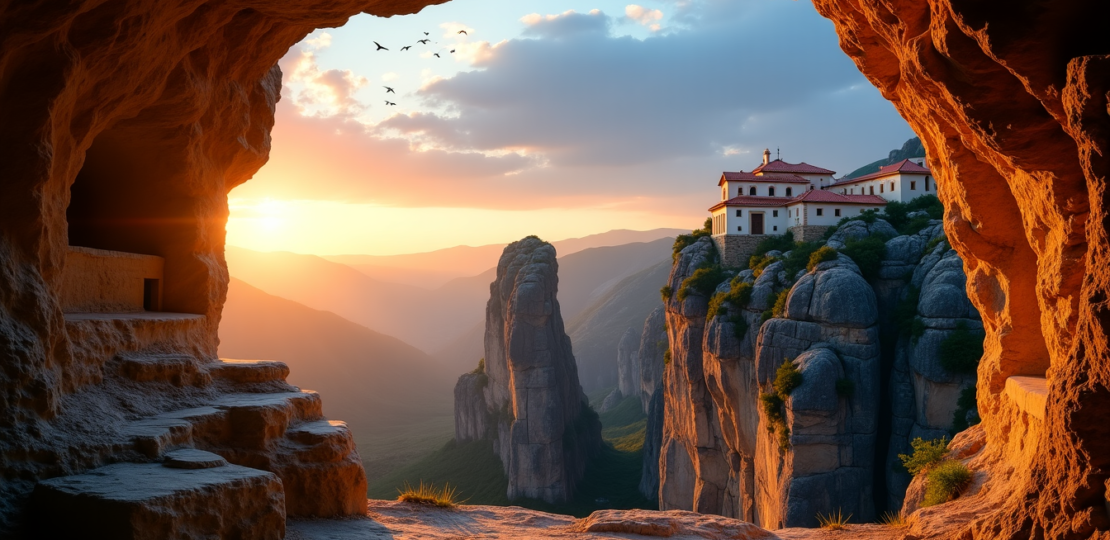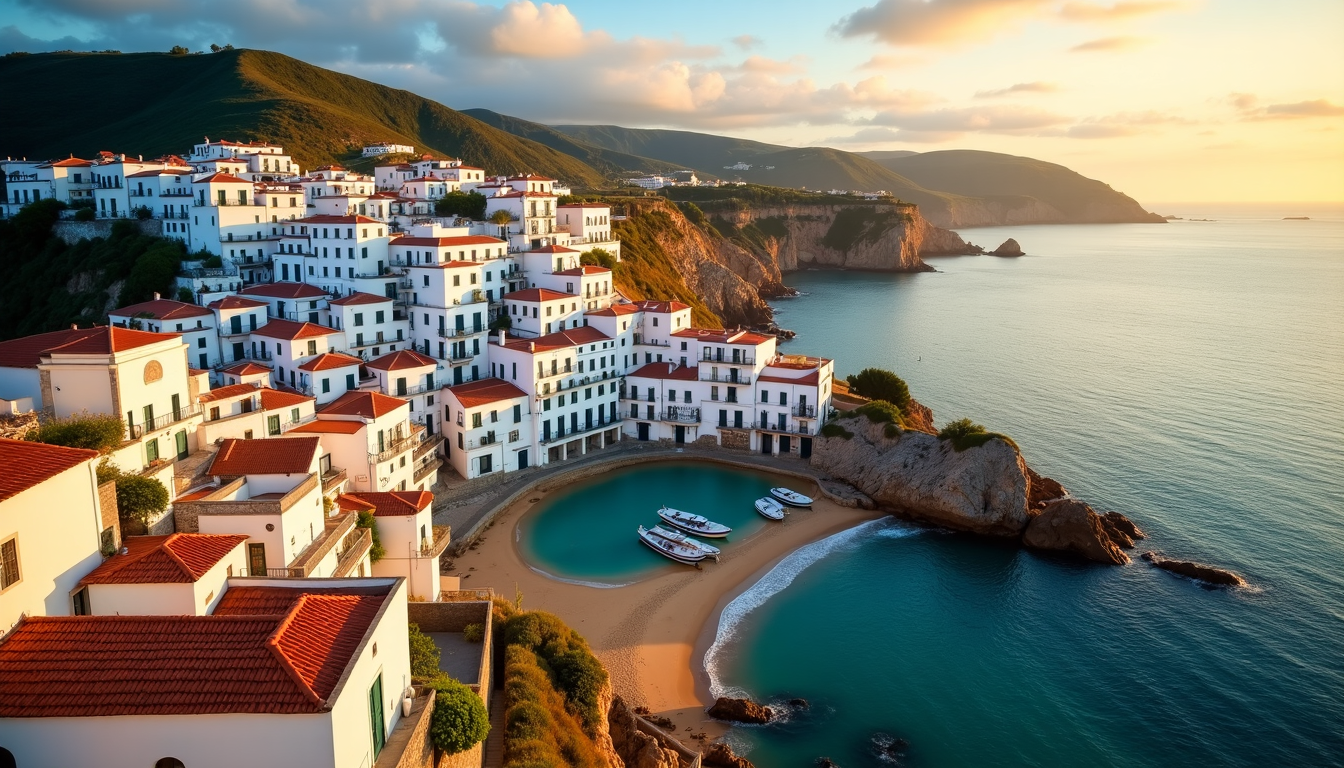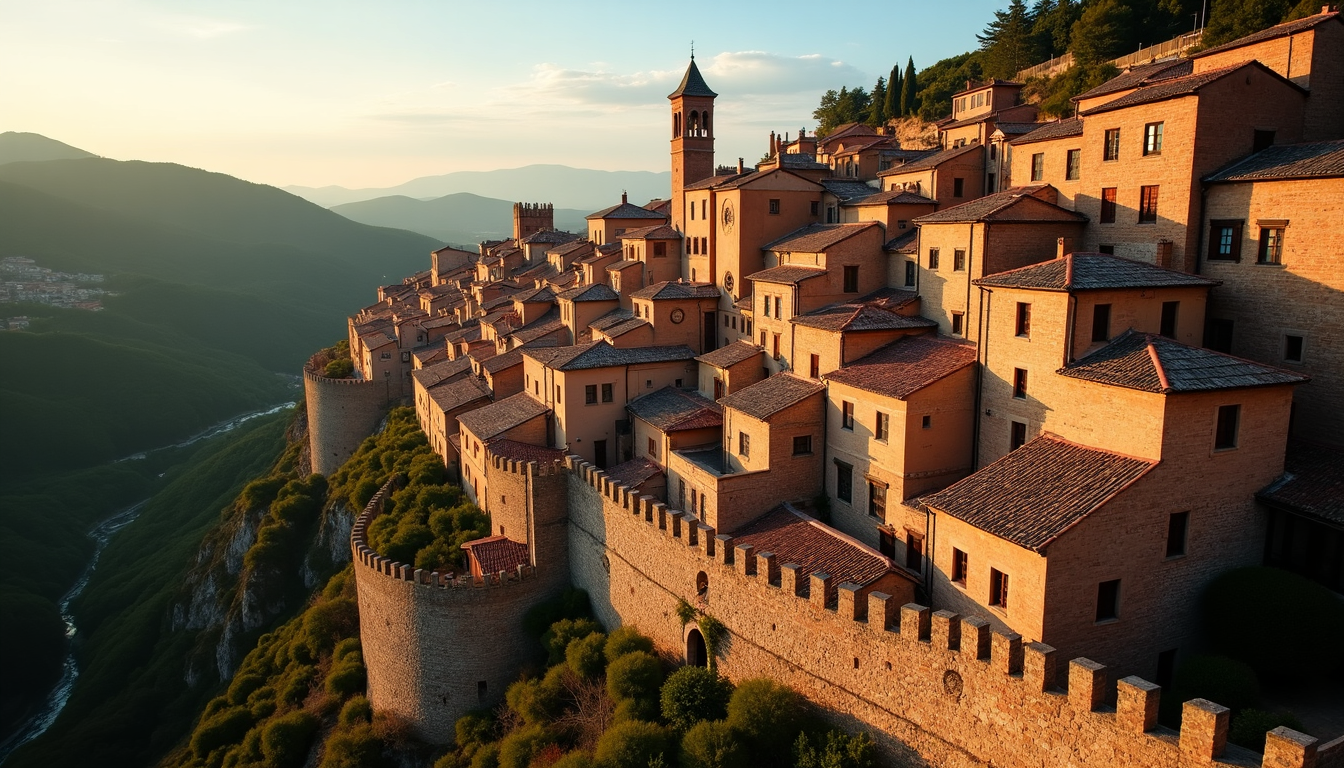13 Hidden Things to Do in Meteora Greece: Local Secrets for 2025
February 1, 2025 | by arbindbodr@gmail.com

The monasteries of Meteora Greece float magically above ground at over 600 meters high. These UNESCO-listed wonders provide some of the most extraordinary experiences you won’t find anywhere else in the world. The name “Meteora” means “suspended in the air” and this makes perfect sense the moment you see these architectural marvels.
Most people know about the six active monasteries that still stand today, down from 24 in the 16th century. Yet we found that there was so much more to explore. This remarkable region holds countless treasures beyond the tourist hotspots. Ancient hiking trails once used by monks and secret caves where mushroom hunters gather their prized finds await adventurous travelers.
The sort of thing I love about this geological wonder comes from exploring both its prominent landmarks and hidden corners. Let me share 13 amazing experiences that most tourists never see. Local secrets like traditional Vlach villages with their unique leek-infused sausages and quiet spots to watch the sunset will make your Meteora visit truly unforgettable.
Secret Cave Chapel of Agioi Anargyroi

Image Source: Tripadvisor
The Cave Chapel of Agioi Anargyroi rests among Meteora’s towering rocks as one of the area’s most captivating hidden treasures.
History of the Hidden Chapel
Monks carved this sacred space into a natural cliff cavity at the time of the mid-14th century. This chapel stands as one of the earliest examples of monastic life in Meteora, with roots going back to the first cave-dwelling ascetics of the 11th century. The chapel reflects the physical and spiritual devotion of early monks who turned these natural caves into sacred worship spaces.
How to Find the Cave Chapel
You’ll find the chapel near Kastraki village, tucked away in Panaghia’s small valley between two majestic rock formations – Pyxari and Amparia. The path to this hidden gem runs past the main church area. A wooden ladder stretches along the rock face that guides you to a breathtaking viewpoint with a cross and bell anchored into the rock.
Best Time to Visit
Spring or autumn provide the ideal conditions to explore the cave chapel. Spring days come with mild temperatures and blooming wildflowers, while autumn brings crisp mornings perfect to hike to the site. The chapel celebrates special occasions twice a year – on July 1st and November 1st. These festivities bring locals together for traditional ceremonies that start with evening services and end with a Divine Liturgy.
Ancient Rock Climbing Routes

Image Source: Visit Meteora
Rock climbing in Meteora has ancient roots that started with local farmers who climbed these towering pillars to keep their sheep safe from invaders.
Historical Monk Paths
Climbing evolved by a lot in the 9th century when monks started using these vertical routes to reach their cave homes. A skilled local shepherd joined Athanasios Meteoritis and two monks to accomplish one of the most remarkable early climbs on what we now call “The Flat Rock”. These early climbers tackled routes that modern climbers still find technically challenging, including the tough “chimney” route on ALYSSOS rock.
Hidden Climbing Spots
Meteora now features over 700 routes across 175 rock pillars. The climbing area has four main sectors – Northern, Western, Southern, and Eastern Group of Pillars. Doupiani Rock stands out as a hidden gem that’s just a 10-minute walk from Kastraki village. The rock’s unique structure combines conglomerate material that looks like cement with embedded river stones, which creates an exceptional climbing experience.
Local Guide Recommendations
Local experts recommend starting at Theopetra Cave, just 15 minutes from Kalambaka. Spring and autumn provide the most stable and comfortable weather for climbing. Climbers should remember that all but one of these six monastery pillars are off-limits. Safety comes first – you should really test holds before putting your weight on them since the rock’s stability varies.
Underground Mushroom Caves

Image Source: Tripadvisor
Greece’s first mushroom museum sits beneath Meteora’s towering rocks and showcases the region’s rich mushroom heritage.
Meteora’s Mushroom Culture
The Natural History Museum of Meteora displays around 250 mushroom species, making it one-of-a-kind in Greece. Local artists have created stunning handmade replicas that capture exact colors, shapes, and sizes. The museum features impressive dioramas that recreate natural growing environments, from forest floors to alpine zones.
Cave Tour Experience
Visitors can explore mushrooms through three growth stages and gain a detailed understanding of fungal lifecycles. The museum teams up with travel offices to organize exciting truffle hunts with trained dogs. The exhibits showcase handmade sculptures that highlight different mushroom stages and their connection to the surrounding ecosystem.
Mushroom Tasting Tips
Visitors can sample 4-5 unique mushroom products at the museum. The distinctive treats include:
- Greek mushroom sweet – made from wild mushrooms and natural ingredients
- Mushroom spreads and sauces
- Local mushroom liqueurs
- Truffle-based specialties
The museum’s shop features about 60 different mushroom and truffle products that carry the museum’s quality seal. These local items highlight the region’s outstanding mushroom quality.
Hidden Sunset Spot at Dragon’s Cave

Image Source: Visit Meteora
A mysterious opening called Dragon’s Cave sits among the dramatic cliffs of Meteora and gives you one of the region’s best spots to watch the sunset.
Dragon’s Cave Location
You’ll find this big cave with its collapsed ceiling right under Varlaam Monastery. The cave comes into view as you pass Agios Nicholaos monastery and head up the main road. You can also reach the spot through a short but tough climb that rewards you with beautiful views.
Photography Tips
The cave and its surroundings glow with warm, amber colors during golden hour. You should get there at least an hour before sunset, which happens around 8:15 PM in July. You’ll need this gear:
- A sturdy tripod to keep things steady in low light
- Wide-angle and 75-300mm zoom lenses
- DSLR camera (Canon EOS 5D Mark IV or similar)
The best photos come from playing around with different angles and compositions. The cave’s shape lets you frame shots creatively, especially during blue hour when the sky turns into a canvas of vibrant colors.
Local Legends
The locals call it “drakospilia,” a name that comes from an old story passed down over time. The tale says a fierce dragon used to live in this huge cave. People believe the dragon still lies buried under the fallen rocks we see today. This connection to myth makes Dragon’s Cave one of the most interesting places to visit in Meteora Greece.
Traditional Vlach Villages

Image Source: Travel.gr
The charming Vlach villages of Meteora lie just beyond the famous rock formations. These communities keep their centuries-old traditions and authentic Greek mountain culture alive.
Cultural Heritage
Vlachava stands on a hilltop with stunning views of Kalambaka and the monastery complex. This farming community holds tight to its ancestral roots. The traditional Vlach language thrives in nearby Sesklo, where kids as young as five speak it fluently. Greek families in the area have also made this linguistic heritage their own.
Local Food Specialties
Valia Calda Restaurant serves as the heart of the region’s food scene. The kitchen brings traditional Vlach cuisine to life with seasonal ingredients. Their signature dishes include:
- Wild herb-infused specialties
- River trout with local mushrooms
- Mountain lamb preparations
- Traditional walnut-based desserts
Local tavernas offer unique Vlach delicacies such as leek-infused sausage, kokoretsi, and pies stuffed with wild greens and feta cheese. Mountain cuisine here is different from coastal Greek food, with heartier dishes that suit the highland weather.
Meeting Local Families
Family-run establishments showcase the true spirit of Vlach hospitality, as multiple generations work side by side. The most genuine experiences happen during traditional celebrations when families come together to share their stories and customs. Young members of the Vlach community keep their heritage strong through cultural societies.
Secret Hermit Caves

Image Source: Visit Meteora
The ancient hermit caves carved into Meteora’s rugged cliffs tell a story of deep spiritual devotion.
Monk History
Meteora’s hermit story began in the 9th century when the first ascetics found their spiritual solitude among these towering rocks. A small yet vibrant ascetic community made these natural shelters their home by the end of the 11th century. The hermits would meet each week at the Theotokos church, which locals called the Doupiani chapel. This chapel still has beautiful 13th-century frescos on its walls.
Cave Locations
The hermit caves of Badovas sit close to Kastraki village. Ancient wooden ladder remains still stick to Pyxari’s cliff face. These caves stand out as the only place worldwide that shows all three types of Greek Orthodox monasticism. The Holy Spirit chapel built by Meteora’s first hermit Varnavas in the 10th century remains the cave’s crown jewel. You’ll find the monks’ prison cave on Aghio Pnevma’s north side, along with Saint George’s historically rich cave.
Guided Tour Options
The Hermit Caves Sunset Tour takes you on a 3-hour journey through these sacred spaces. Tour features include:
- Thousand-year-old Bandovas hermitages exploration
- Ancient monk’s prison visits
- Hidden caves with sunset panoramic views
- Local guides sharing stories and legends
Tours run daily between March and October. Visitors need intermediate fitness levels. Groups should have at least two people to get the best experience.
Local Shepherd’s Trail

Image Source: Tripadvisor
The ancient paths and shepherd trails of Meteora hide a centuries-old way of life that still thrives in these rocky landscapes.
Trail Description
Local shepherds built small stone towers as navigation markers along these paths. A network of trails stretches 35 kilometers, showing hidden monastery ruins and stunning rock formations. The paths start near Kastraki village, where Lazarus, a professional guide, shares stories that go way beyond the reach of any guidebook. The Kastraki commune rented rock tops to shepherds until 1965. These shepherds grazed their herds in rich pastures at Sourloi, Modi, and Ambaria.
Meeting Local Shepherds
These trails are a great way to get to know local shepherds who keep their age-old traditions alive. Visitors can explore an original shepherd’s hut called “Mitato”. The trail lets you learn about shepherd life while you might spot wild eagles and mountain goats.
Cheese Making Experience
This thing to do in Meteora Greece stands out when you watch traditional cheese-making up close. The shepherd’s hut lets visitors:
- See how fresh cheese is made
- Taste different local cheeses
- Discover traditional storage methods
- Take part in the authentic raki tasting ritual
The shepherds take pride in sharing their craft and explaining cheese-making traditions passed down through generations. This hands-on activity shows you the shepherd’s crucial role in keeping Meteora’s cultural heritage alive.
Ancient Byzantine Ruins

Image Source: Visit Meteora
Ancient human civilization left fascinating traces deep under Meteora’s famous monasteries. These remnants date back 50,000 years.
Historical Significance
Meteora’s Byzantine heritage reaches way beyond the reach and influence of its monasteries. The region became a vital religious center, and the first Byzantine structures appeared in the 11th century. The Byzantine church of Kalambaka, which is the oldest standing monument, went through several restorations from the 10th to 13th centuries. This remarkable architectural achievement of the period stands on ancient foundations.
Hidden Locations
The Theopetra Cave lies 4 kilometers from Kalambaka and ranks among the most important archeological sites. The cave houses something truly remarkable – the oldest known human-built structure, a stone wall that was built 23,000 years ago. Archeologists found that there was an ancient temple’s foundation beneath the eastern side of the Byzantine church. This temple honored Apollo and dated back to the 4th century BC.
Archeological Finds
Recent digs have brought amazing discoveries to light:
- Petrified diatoms that help us understand ancient climates
- Artifacts showing how Neanderthals evolved into modern humans
- Signs of the fundamental change from hunting-gathering to farming
- Pottery fragments from different time periods
Meteora’s archeological treasures keep growing as researchers uncover more historical layers. These ancient sites are a great way to get unique things to do in Meteora Greece all year round, whatever the season. However, Theopetra Cave remains temporarily closed for safety inspections.
Hidden Natural Springs

Image Source: Traveling Cats
Hidden beneath Meteora’s towering rock pillars, natural springs await adventurous explorers with their refreshing waters.
Spring Locations
The Amvrakia spring flows at Meteora’s pillar base, close to Kastraki village. We spotted this spring emerging from the southeastern Meteora conglomerate pillars during wet seasons. The Pantanassa spring is another peaceful spot where visitors can relax among the rocks. These springs serve as perfect rest stops for hikers, and you’ll find one easily available spring near Old Kastraki’s trailhead.
Water Properties
Meteora’s unique geological formation shapes these springs’ characteristics:
- Seasonal flow patterns vary with rainfall
- Water moves through rock discontinuities
- Network of groundwater pathways above impermeable strata
- Conductive zones measure less than 200 Ohm.m
These water sources emerge through large gaps in Meteora’s conglomerates that formed during the Upper Eocene-Lower Miocene periods. Plants often grow from these water-filled cracks and add a unique touch to the area’s appearance.
Local Beliefs
The springs hold deep cultural significance, yet safety remains important for their use. Visitors should be careful with Amvrakia spring’s water because of its location near the abandoned Agios Nikolaos church’s cemetery. Each monastery maintains its own water source and provides at least one cold water fountain for visitors. These springs remain crucial to local traditions and daily life, bringing both practical benefits and cultural value to the Meteora community.
Secret Monastery Gardens

Image Source: Odynovo Tours
Sacred gardens thrive behind Meteora’s stone monastery walls, telling stories of centuries-old monastic traditions.
Garden Access
Roussanou Monastery’s garden stands out as one of Meteora’s finest, where 15 nuns care for an array of plants and herbs. Visitors can explore these gardens through guided tours and learn about traditional growing methods. St. Nicholas Anapavsa Monastery boasts a charming garden that gives visitors stunning valley views.
Seasonal Produce
Red pomegranates bring bursts of color to every monastery yard. The monasteries grow their own fruits and vegetables to stay self-sufficient year-round. Between tours, Roussanou Monastery’s nuns create olive oil and other products from their garden harvests.
Monk’s Recipes
Garden ingredients shape the heart of monastic cooking. The diet centers on vegetables, legumes, and seafood – all but one exclude meat. Monks follow strict fasting rules and skip oil in their meals on Mondays, Wednesdays, and Fridays. Their time-honored recipes include:
- Fasting-friendly vegetable dishes
- Preserved fruit sweets
- Herb-infused oils
- Traditional liqueurs
The monks thrive on this simple, wholesome diet with modest portions. Local women’s cooperatives keep these culinary traditions alive by making homemade preserves and liqueurs.
Local Wine Caves

Image Source: GetYourGuide
The art of winemaking thrives beneath Meteora’s towering pillars, where age-old caves safeguard both wines and history.
Wine History
The PGI Meteora wine zone, 17 years old, stretches from 150m to 800m altitude in northwestern Thessaly. We centered this semi-mountainous region around Theopetra Cave, which benefits from cool northern winds and the Pineios and Litheos rivers’ influence. The region’s winemaking heritage spans centuries, and red wines dominated early production.
Tasting Experience
Two notable wineries, Loudas Winehouse and Domaine Liakou, now carry Meteora’s wine legacy forward. Domaine Liakou’s facility sits at 470m altitude and sources grapes from vineyards within 3km. These wineries craft an impressive range of wines, including:
- White varieties: Assyrtiko, Malagouzia, Batiki
- Red varieties: Zalovitiko, Xinomavro, Limniona
- Rosé options from multiple grape combinations
Cave Storage Traditions
Without doubt, Meteora’s wine culture shines brightest in its monastery caves. The Great Meteoron Monastery’s historic cylindrical basket press features wooden staves bound by metal rings that once extracted grape juice. The monasteries’ unique approach involved storing wines in large metal-bound wooden barrels before moving them to round-bottomed bottles with wicker protection. The monastery’s cellar, with its weathered wooden barrels, shows evidence of Meteora’s lasting winemaking heritage.
Hidden Forest Chapels

Image Source: Britannica
Ancient chapels stand as quiet guardians of Orthodox Christian heritage in Meteora’s lush woodlands. These sacred spaces are a great way to get spiritual connections and are among the popular things to do in Meteora Greece.
Chapel Locations
The Ypapanti Monastery sits peacefully in a natural rock shelter since 1367 AD. Hidden pathways lead to this restored chapel that blends remarkably with the surrounding landscape. The Holy Trinity Chapel shows off beautiful 17th and 18th-century frescoes. The St. Charalambos Cathedral‘s history goes back to the 18th century.
Religious Significance
These forest chapels were vital gathering spots for hermits who made their homes in nearby caves. The chapels showcase Orthodox Christian traditions from Greece’s early days of embracing this faith. Six active monasteries now preserve these sacred spaces and their centuries of religious heritage.
Local Ceremonies
The chapels come alive with traditional celebrations year-round. The most important events include:
- Holy Week processions and rituals
- Annual monastery celebrations, including Ypapanti’s February 2nd feast
- Evening services that lead into Divine Liturgy
Monks and nuns keep ancient traditions alive in these chapels. These sacred spaces served as shelters during political turmoil and ended up becoming centers of Orthodox Christian worship and learning.
Secret Valley Viewpoint

Image Source: The Marvelous Travelers
A peaceful valley viewpoint sits away from the crowded observation decks. This hidden spot gives you clear views of Meteora’s majestic peaks and ranks among the best things to do in Meteora Greece.
Finding the Spot
You’ll find this secret lookout just a quarter-mile past the main road’s observation deck. A small parking lot on the left side takes you to a large flat rock platform with valley views. Another way to reach this spot is the path near Varlaam monastery, where the winding street shows off amazing panoramas.
Best Photo Times
The golden hour stretches from an hour before until an hour after sunrise and sunset. Summer evenings get busy, so it’s best to arrive early for the perfect spot. Your gear should include:
- A sturdy tripod to handle low-light shots
- DSLR camera (Canon EOS 5D Mark IV recommended)
- 75-300mm zoom lens to capture monastery details
Local Guide Tips
You need to move around quickly to catch different views. The blue hour right after sunset creates magical photo moments. Here’s what experienced photographers suggest:
- Spring visits give you flowering landscapes and pleasant weather
- Use marked parking areas close to viewpoints
- Check out several spots since each one shows the monasteries differently
Comparison Table
| Hidden Attraction | Location/Access | Historical Significance | Best Time to Visit | Special Features | Local Tips/Recommendations |
|---|---|---|---|---|---|
| Secret Cave Chapel of Agioi Anargyroi | Near Kastraki village in Panaghia valley | 700 years old, among the first monastic sites | Spring or autumn | A wooden ladder leads to a viewpoint with cross and bell | Join celebrations on July 1st and November 1st |
| Ancient Rock Climbing Routes | Located on 175 rock pillars | 1200 years old monk paths | Spring and autumn | More than 700 routes in 4 main areas | Begin at Doupiani Rock, just 10 minutes from Kastraki |
| Underground Mushroom Caves | Natural History Museum of Meteora | Greece’s first mushroom museum | Year-round | Showcases 250 mushroom species | Try the mushroom tasting with 4-5 local products |
| Hidden Sunset Spot at Dragon’s Cave | Below Varlaam Monastery | A natural cave with fallen ceiling | July at 8:15 PM | Natural rock formation with sweeping views | Get there 1 hour early for perfect photos |
| Traditional Vlach Villages | Vlachava village above Kalambaka | Mountain culture from centuries past | Any season | Rich Vlach food and native language | Time your visit with local festivals |
| Secret Hermit Caves | Near Kastraki village, Badovas area | Ascetic homes from 9th-11th century | March to October | Shows three Orthodox monastic styles | Book small group tours (2 person minimum) |
| Local Shepherd’s Trail | Begins near Kastraki village | Active grazing route until 1965 | Any season | 35km network of paths | Stop at traditional Mitato (shepherd’s shelter) |
| Ancient Byzantine Ruins | 4km from Kalambaka (Theopetra Cave) | 50,000-year legacy | Year-round | World’s oldest human structure (23,000 years) | Remember: Theopetra Cave closed temporarily |
| Hidden Natural Springs | Near Kastraki at Meteora’s base | Upper Eocene-Lower Miocene era | Rainy seasons | Complex groundwater system | Stay alert near Amvrakia spring |
| Secret Monastery Gardens | Inside Roussanou Monastery | Centuries of monk gardening | Any season | Age-old growing methods | Garden tours available |
| Local Wine Caves | PGI Meteora wine zone (150-800m high) | 17 years old | Year-round | Classic wooden barrel aging | Check out Loudas Winehouse or Domaine Liakou |
| Hidden Forest Chapels | Scattered in Meteora woods | Since 1367 AD (Ypapanti) | Holy Week | 17th-18th century wall paintings | Experience evening prayers and Divine Liturgy |
| Secret Valley Viewpoint | Quarter-mile past main deck | Recent discovery | Sunrise/sunset ±1 hour | Spacious rock platform | Best in spring when flowers bloom |
Conclusion
Meteora is far more than monasteries sitting on dramatic cliffs. My journey led me to thirteen remarkable hidden spots that revealed this extraordinary region’s spirit. Each location tells its own story through secret cave chapels, ancient climbing paths, and underground mushroom caves. These unexpected finds make this destination truly special.
The hidden locations highlight Meteora’s character in surprising ways. Traditional Vlach villages keep their mountain culture alive, while secluded valley viewpoints provide perfect spots to watch the sun set in solitude. Local shepherds walk their age-old paths as monastery gardens maintain their centuries-old growing traditions.
The best time to visit these hidden treasures varies with the seasons. Wildflowers bloom and hiking becomes pleasant in spring. Autumn mornings are crisp and perfect to capture photos. Each season brings new life to these spots, which makes returning throughout the year worthwhile.
The real enchantment of Meteora exists beyond its well-known sights. Ancient hermit caves tell tales of devotion, and hidden natural springs provide quiet breaks from crowded tourist paths. These thirteen secret locations let travelers create their own special bond with this remarkable Greek treasure by stepping away from the usual routes.
RELATED POSTS
View all


